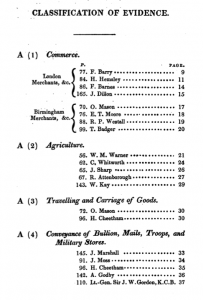The Stop HS2 campaign website recently revisited an interview with the Secretary of State for Transport where she drew on a Victorian heritage of ‘boldness’ to justify the need for a new High Speed Railway. I was considering this in general terms as a kind of design precedent in my last post but the StopHS2 campaign were also thinking about it as an invitation to make technological comparisons between the eighteenth, nineteenth and twenty-first centuries.
If we were to follow the Victorian example, says StopHS2, we wouldn’t be looking backwards to a 200 year old technology but looking forwards to embrace one for the future:
“The thing is, the Victorians didn’t look back and copy what was going on more than a century earlier, in the 1700s. They looked at what was new in Victorian times, and that was trains – then. If we want to copy Victorian vision, we should not try and rebuild what they built. We should look at what is new in the 21st century – and that isn’t a faster train.”
From the Archives: Justine Greening, Victorians versus Today.
Online at: http://stophs2.org/news/11952-archives-justine-greening-victorians-today
The comparison between the two railways across the two centuries, both by the Minister and the campaigners, distills something of what the current debate is about: What did the Victorians do and why did they do it?
The 1830’s version of the railway was an embodiment of the spirit of the Industrial Revolution. Private capital investing in new infrastructure in order to move goods to market. A railway could get the goods there quicker and cheaper than the competition which at that time was road or canal. So the industrialist increases his market and his profit. The railway company profits from the freight charges.
The carriage of passengers provided an additional revenue stream but this was seen as secondary to the commercial, agricultural and wider benefits promoted by the London and Birmingham Railway Company as it canvassed for support. These benefits were enumerated in the extract of minutes of evidence from the 1832 House of Lords Committee on the Railway Bill.

The railway was primarily intended to transport goods and in doing so would generate profits to shareholders, merchants and industrialists. This was their vision. They went about it with a bold engagement with landowners who were bought off at vastly inflated property prices. And a bold exploitation of the fledgling shareholder economy.
The adoption of the new technology to do this can be seen as an incremental development of the transport network. The wheel had been used to carry goods on turnpikes in the early eighteenth century. This had, in turn, been superseded by the narrow boat, which carried goods on a dedicated waterway.
The railway would combine the new(-ish) technology of the steam engine with the old technology of the wheel and the advantages of a dedicated highway. Together these innovations offered significantly faster and more reliable transportation links between the suppliers and their markets.
So, the Victorians were visionary and were bold but were being so by building on their immediate precedents. The development of the railway was based on the expansion of existing markets, the exploitation of existing financial instruments and the evolution of existing technologies. How does this compare with HS2?